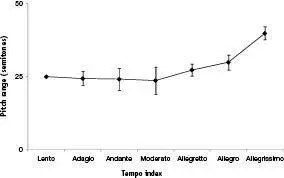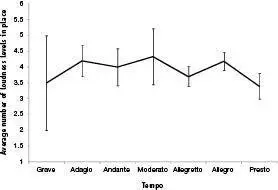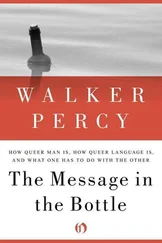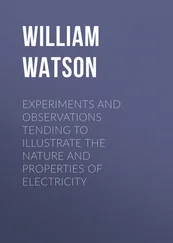Mark Changizi - Harnessed - How Language and Music Mimicked Nature and Transformed Ape to Man
Здесь есть возможность читать онлайн «Mark Changizi - Harnessed - How Language and Music Mimicked Nature and Transformed Ape to Man» весь текст электронной книги совершенно бесплатно (целиком полную версию без сокращений). В некоторых случаях можно слушать аудио, скачать через торрент в формате fb2 и присутствует краткое содержание. Год выпуска: 2011, Издательство: Perseus Books Group, Жанр: Старинная литература, на английском языке. Описание произведения, (предисловие) а так же отзывы посетителей доступны на портале библиотеки ЛибКат.
- Название:Harnessed: How Language and Music Mimicked Nature and Transformed Ape to Man
- Автор:
- Издательство:Perseus Books Group
- Жанр:
- Год:2011
- ISBN:нет данных
- Рейтинг книги:5 / 5. Голосов: 1
-
Избранное:Добавить в избранное
- Отзывы:
-
Ваша оценка:
- 100
- 1
- 2
- 3
- 4
- 5
Harnessed: How Language and Music Mimicked Nature and Transformed Ape to Man: краткое содержание, описание и аннотация
Предлагаем к чтению аннотацию, описание, краткое содержание или предисловие (зависит от того, что написал сам автор книги «Harnessed: How Language and Music Mimicked Nature and Transformed Ape to Man»). Если вы не нашли необходимую информацию о книге — напишите в комментариях, мы постараемся отыскать её.
Harnessed: How Language and Music Mimicked Nature and Transformed Ape to Man — читать онлайн бесплатно полную книгу (весь текст) целиком
Ниже представлен текст книги, разбитый по страницам. Система сохранения места последней прочитанной страницы, позволяет с удобством читать онлайн бесплатно книгу «Harnessed: How Language and Music Mimicked Nature and Transformed Ape to Man», без необходимости каждый раз заново искать на чём Вы остановились. Поставьте закладку, и сможете в любой момент перейти на страницу, на которой закончили чтение.
Интервал:
Закладка:

Figure 45. Doppler pitch changes slowly when near the maximum and minimum of the Doppler pitch range. Melodies also share this, as shown in Figure 46.

Figure 46. Across the 10,000 classical themes, this plot shows the average duration of the minimum, intermediate, and maximum pitch in a theme. One can see that the minimum and maximum pitch in a theme each tend to be longer in duration than intermediate pitches. (Averages of durations were computed in logarithmic space. Error bars are too small to see.)
In this section we looked at three facets of melody’s home range. We saw that (i) melodies typically have a fixed home range, called the tessitura; (ii) melodies tend to distribute themselves fairly uniformly within their home range; and (iii) melodies tend to dwell longer at the edges of their range. Melody behaves in these ways, I am suggesting, because Doppler shifts behave in these ways. Melody is broadly Doppler-like in the home it keeps and the manner in which it distributes its movements and time throughout its home.
6 Fast Tempo, Wide Pitch
In the previous section we examined melody’s home range—its size, and melody’s hangouts within it. One facet of melody we discussed was that it tends to remain in a cage, called the tessitura, and I am suggesting that the top and bottom of the tessitura correspond to the Doppler pitches when the fictional mover is directed toward and away from you, respectively. But remember that Doppler shifts are greater when the mover has greater speed. A car driving past you at a crawl will have a small difference between its high approaching pitch and its low moving-away pitch. But if you stand at the side of the freeway, the difference in pitch as the cars pass you will be much greater. It follows from these simple observations that faster-tempo pieces of music should have bigger home ranges for their melodies. That is, if melodic contour has been culturally selected to mimic the Doppler shifts of movers, then the prediction is that music with a faster tempo (more beats per minute) should have a wider tessitura.
To test this, Sean Barnett and I measured the tempo and tessitura width of the melodies of all the pieces in the Classical Fake Book (Hal Leonard Corp.). (We did not use the Dictionary of Musical Themes here because it does not include tempo data.) Figure 47 shows how tessitura width varies with tempo (for just those pieces originally intended for keyboard). One can see that although tessitura width does not change for the several low tempos, it rises among the faster tempos. Tessitura width increases with greater tempo, as predicted from the fact that the Doppler pitch home range widens as mover speed increases. This is particularly striking because themes with wider tessituras tend to be more difficult to play, and so one might predict that wider-tessitura music would go with a slower tempo, but this is the opposite of what we in fact find.
One might wonder whether this result could be due, instead, to a general phenomenon in which faster-tempo music tends simply to amplify musical qualities, whatever they may be. Caitlin Morris measured the range of loudness levels—the “loudness-tessitura” width—and the tempo for a sample of 55 pieces in Denes Agay’s piano anthology, The Classical Period. Figure 48 shows how the width of the loudness range varies with tempo, and one can see that there is no trend. The pitch tessitura width does not, then, increase in Figure 47 merely because of some general proclivity to amplify musical qualities at higher tempos. In fact, the lack of change in “loudness-tessitura” width as a function of tempo is something the music-is-movement theory does predict, assuming that loudness in music is primarily driven by proximity, as we discussed in detail in the “Nearness versus Stompiness” section of Chapter 4. Imagine that a mover carries out a bout of behavior in your vicinity at low speed. Now imagine this mover is asked to repeat the same bout of behavior, but this time moving much more quickly—that is, at a higher tempo. In each case the mover is, we presume, going through the same sequence of spatial coordinates, and thus the same sequence of distances from the listener. And so it immediately follows that the mover courses through the same sequence of loudnesses no matter whether moving slowly or quickly. The music-is-movement theory predicts, then, that, unlike pitch, the range of loudnesses should not change as a function of the music’s tempo—faster music, same loudness range—and that’s what we found.

Figure 47. Tessitura (of melody) width versus tempo, among all 92 pieces for keyboard in the Classical Fake Book for which tempo data could be acquired. One can see that faster music tends to have wider tessituras, consistent with the Doppler interpretation of melodic pitch. (We found the same result when we used the data for all pieces.) The Classical Fake Book was used for two reasons. First, it is helpful because fake books are not cluttered with the notes from the chords (chords are notated via letter labels). Second, it is the only classical fake book I possess, so it amounted to an easy-to-get, unbiased sample.

Figure 48. “Loudness-tessitura” width (i.e., the total range of loudness levels) versus tempo, sampled from 55 pieces in Denes Agay’s An Anthology of Piano Music, Vol. II: The Classical Period (used instead of the Dictionary of Musical Themes because the latter does not possess loudness information). Unlike (pitch) tessitura width, which is expected—and does—increase with increasing tempo, the loudness-tessitura is expected—and does—remain constant. This anthology was chosen because it was the only proper non-fake, non-lesson book I possessed at home.
We see, then, that faster-tempo music behaves like faster-tempo movers: in each case the range of pitches increases with tempo, and the range of loudnesses does not change. Essentially, these results show us that the physics of movers is found in the structure of music. The upcoming Encore section continues the search for physics in music, and concerns momentum and Newton’s First Law.
7 Newton’s First Law of Music
Objects at rest stay at rest unless pushed. And objects moving continue moving in the same direction unless pushed. This is Newton’s First Law of Motion, which concerns inertia. This is a fundamental law of physics, and applies to any object with mass. Humans have mass, so it applies to us as well. And if music sounds like hulking humans moving about, then even music should adhere to Newton’s First Law of Motion. Does it?
Before attempting to answer this, let’s make sure we steer clear of one of the psychological handicaps I talked about in Chapter 4: the tendency to interpret musical pitch as spatial. As musical notes rise and fall on the page, or as your hands move hither and thither on the piano, it’s hard to resist the feeling that inertia should show up in the musical domain as a tendency for a moving pitch to keep on moving in the same direction. But this is a pitfall. Recall that I am claiming that pitch is about the direction of the mover, not about position in space. Changes in pitch are therefore about changes in the mover’s direction, not about changes of position in space.
Читать дальшеИнтервал:
Закладка:
Похожие книги на «Harnessed: How Language and Music Mimicked Nature and Transformed Ape to Man»
Представляем Вашему вниманию похожие книги на «Harnessed: How Language and Music Mimicked Nature and Transformed Ape to Man» списком для выбора. Мы отобрали схожую по названию и смыслу литературу в надежде предоставить читателям больше вариантов отыскать новые, интересные, ещё непрочитанные произведения.
Обсуждение, отзывы о книге «Harnessed: How Language and Music Mimicked Nature and Transformed Ape to Man» и просто собственные мнения читателей. Оставьте ваши комментарии, напишите, что Вы думаете о произведении, его смысле или главных героях. Укажите что конкретно понравилось, а что нет, и почему Вы так считаете.












